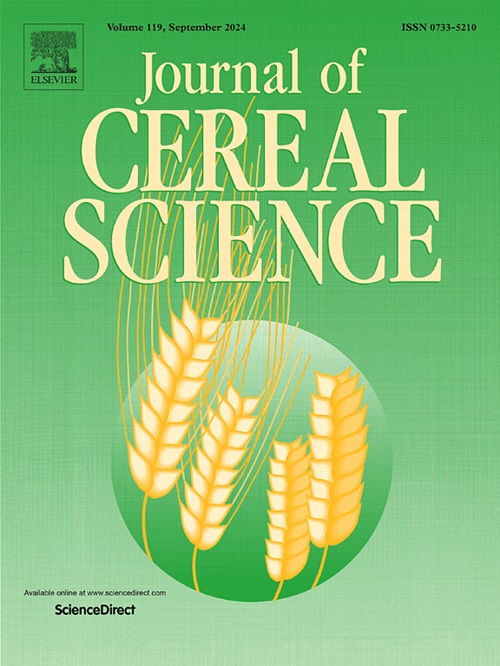The effects of the degree of milling on water mobility and texture of rice during simulated cooking
IF 3.7
2区 农林科学
Q2 FOOD SCIENCE & TECHNOLOGY
引用次数: 0
Abstract
Milling makes rice softer and fluffier by enabling it to absorb more water, which is closely related to the degree of milling (DOM). Thus, this study investigated the effect of differences in water absorption and distribution between rice at different DOM on its texture. The results showed that the water mobility in rice gradually increased with water absorption during soaking and cooking. After soaking, low mobile semi-bound water (T22) accounted for 90.13% of water in the rice. In contrast, this percentage rapidly decreased to 23.34% after cooking for 20 min, with 49.74% and 23.57% more mobile constructed water (T23) and the most mobile free water (T24) respectively. Milling enhanced water mobility in rice by creating more cracks on the grain surface so that T23 rapidly took up 73.7% within 10 min of cooking, resulting in fluffy and soft rice after 20 min of cooking with 67.43% of T24. As the DOM increased, rice's water absorption, moisture status, and texture gradually improved and stabilized at DOM >8.06%. Combined with the structural changes in rice, DOM <8.06% as the moderate milling could retain most of the aleurone layer. The results of the correlation analyses reaffirmed water migration as a new way to judge moderate milling, thus supporting the application of moderate milling in rice industrialization.

模拟蒸煮过程中碾磨程度对大米水分流动性和质构的影响
碾磨使大米能够吸收更多的水分,从而使大米更加柔软蓬松,这与碾磨程度(DOM)密切相关。因此,本研究考察了不同DOM条件下水稻吸水率和水分分布的差异对其织构的影响。结果表明:在浸泡和蒸煮过程中,大米的水分流动性随着吸水量的增加而逐渐增加;浸泡后,低流动半束缚水(T22)占水稻水分的90.13%。蒸煮20 min后,这一比例迅速下降至23.34%,流动的人工水(T23)和流动的自由水(T24)分别增加了49.74%和23.57%。碾磨使稻米表面产生更多的裂缝,从而增强了水分在稻米中的流动性,使得T23在蒸煮10 min内迅速占73.7%,蒸煮20 min后稻米松软,占T24的67.43%。随着DOM的增加,水稻的吸水率、含水率和质地逐渐改善,并稳定在DOM >;8.06%。结合水稻的结构变化,适度碾磨可以保留大部分糊粉层。相关分析的结果再次肯定了水分迁移作为判断适度碾磨的新方法,从而支持适度碾磨在水稻产业化中的应用。
本文章由计算机程序翻译,如有差异,请以英文原文为准。
求助全文
约1分钟内获得全文
求助全文
来源期刊

Journal of Cereal Science
工程技术-食品科技
CiteScore
7.80
自引率
2.60%
发文量
163
审稿时长
38 days
期刊介绍:
The Journal of Cereal Science was established in 1983 to provide an International forum for the publication of original research papers of high standing covering all aspects of cereal science related to the functional and nutritional quality of cereal grains (true cereals - members of the Poaceae family and starchy pseudocereals - members of the Amaranthaceae, Chenopodiaceae and Polygonaceae families) and their products, in relation to the cereals used. The journal also publishes concise and critical review articles appraising the status and future directions of specific areas of cereal science and short communications that present news of important advances in research. The journal aims at topicality and at providing comprehensive coverage of progress in the field.
 求助内容:
求助内容: 应助结果提醒方式:
应助结果提醒方式:


